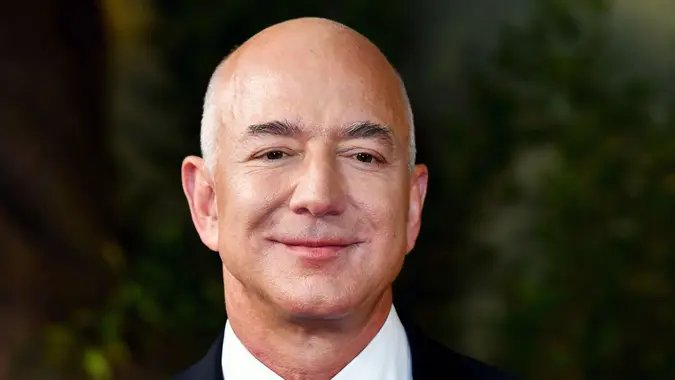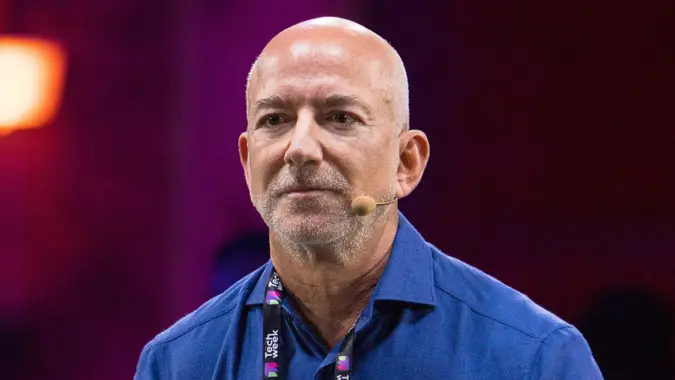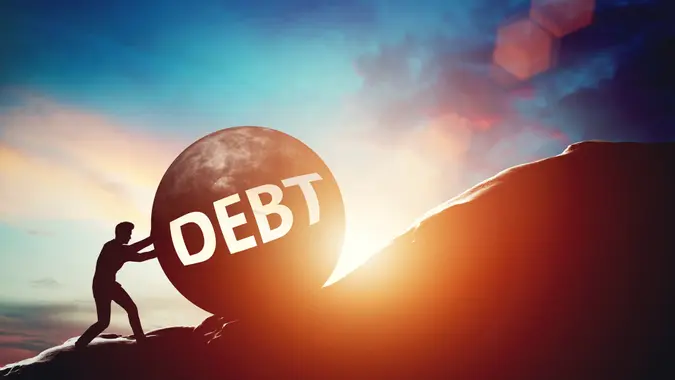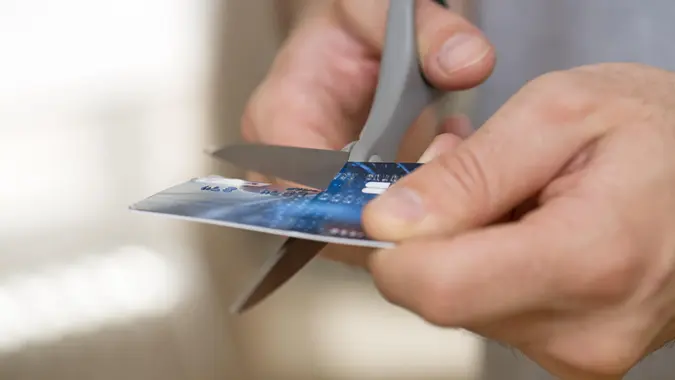I Was $30,000 in Debt: How Dave Ramsey’s Tips Helped Me Recover

Commitment to Our Readers
GOBankingRates' editorial team is committed to bringing you unbiased reviews and information. We use data-driven methodologies to evaluate financial products and services - our reviews and ratings are not influenced by advertisers. You can read more about our editorial guidelines and our products and services review methodology.

20 Years
Helping You Live Richer

Reviewed
by Experts

Trusted by
Millions of Readers
Dave Ramsey is an American radio personality who offers financial advice on the nationally syndicated radio program, “The Ramsey Show.” Known for his blunt and straightforward approach to personal finance, Ramsey has quickly become one of the most trusted sources for money tips. While not everyone may agree with Ramsey’s sometimes controversial advice, such as avoiding all debt like the plague except for mortgages, you can’t deny the impact he’s had on people’s financial lives.
David Bakke, contributing writer at Dollar Sanity, is one of the many Americans who were able to turn their money situation around after discovering the financial guru’s show. Here’s exactly how Ramsey’s tips help him pay down roughly $30,000 of debt.
Also see five money moves Ramsey suggests you make in an election year.
Dave Ramsey’s Money Advice: the Debt Snowball Method
Debt is a heavy burden to carry, both financially and emotionally. Thankfully, Bakke was able to gradually tackle his debt by implementing the debt snowball method, a debt repayment strategy made popular by Ramsey.
“I found the Dave Ramsey website through a friend who knew I was struggling. Although I relied on some of his tips, like getting on a budget and cutting up credit cards, the strategy that produced the best results and quickly got me out of my lowest point was the debt snowball method,” Bakke explained in an email.
Here’s how the debt snowball Method works: First, you’ll make a list of all your debts, from the smallest to the largest balance. Then, you start putting money toward your smallest balance while making only minimum payments on all other balances. Once the smallest debt is paid off, you’ll move your focus to the next-largest balance while continuing to make minimum payments on the rest. You rinse and repeat until all debts are paid off.
By scratching the smallest credit card balance off the list and working your way up to bigger debts, you can use those little wins as motivation to keep going.
Why the Debt Snowball Method Works so Well
“This method worked best for me because I needed that emotional boost of having one less debt to worry about,” Bakke said. He explained that though the debt avalanche method — which involves attacking debts by the interest rates of highest to lowest — is another strategy he tried, it didn’t work as well as the debt snowball method because of the reason he just stated.
“Once I stuck to the plan, I went from eight debts to seven debts to six debts and so on. At that point, I was so motivated to get out of debt for good that I made the necessary sacrifices to pay off all of my balances completely and fully,” Bakke said. “Let me tell you, the day that I crossed that last debt off of my list was one that I will remember for the rest of my life.”
Since paying off his debt using Ramsey’s debt snowball method, Bakke hasn’t carried a credit card balance again and is actively working on boosting his retirement savings and shoring up an emergency fund. “If you’re drowning in debt, I’d highly recommend trying both the snowball and avalanche approach and go with what personally works best for you,” Bakke said.
Debt Snowball vs. Debt Avalanche Method
So, what exactly is the difference between the debt snowball and debt avalanche method? Simply put, with the avalanche method, you focus on paying off the debt that costs you the most first — the one with the highest interest rate — whereas the debt snowball method focuses on wiping out your smallest balances first.
If you value quick wins, the debt snowball method may be more suitable since it helps you stay motivated. But if you want to pay the least amount of interest on your debt repayment journey, choose the debt avalanche method.
Other Ramsey Tips To Avoid Debt and Reach Financial Goals
- Create a zero-based budget. A zero-based budget is when your income minus expenses equals zero. This doesn’t mean you end up with $0 in your bank account each month. It just means you put every single dollar to good use, whether that’s giving, saving or spending. Ramsey recommends using his budgeting app, EveryDollar, to start tracking your expenses as you go.
- Build an emergency fund of at least $1,000. If you’re drowning in debt and don’t have much left over each month to put toward your rainy day fund, Ramsey advises that you start with an emergency fund goal of $1,000. Then, as you pay down debt, beef up your emergency fund to cover three to six months of expenses.
- Skip the ‘buy now, pay later’ method. Buy now, pay later (BNPL) is a short-term installment loan that breaks up your purchase into multiple equal payments that you pay over a period of time. Ramsey believes you should take a hard pass on this payment method since it often results in buyer’s remorse and unnecessary debt.
- Invest 15% of your gross income in retirement. After paying off debt and building an emergency fund of at least $1,000, Ramsey suggests putting 15% of your household income in tax-advantaged investment accounts like 401(k)s, traditional IRAs, and Roth IRAs. But what should you invest in inside your tax-advantaged investment accounts? Ramsey only recommends investing in mutual funds since they spread your investment across many companies and help you avoid the risks that come with single stocks.
More From GOBankingRates
 Written by
Written by  Edited by
Edited by 

























